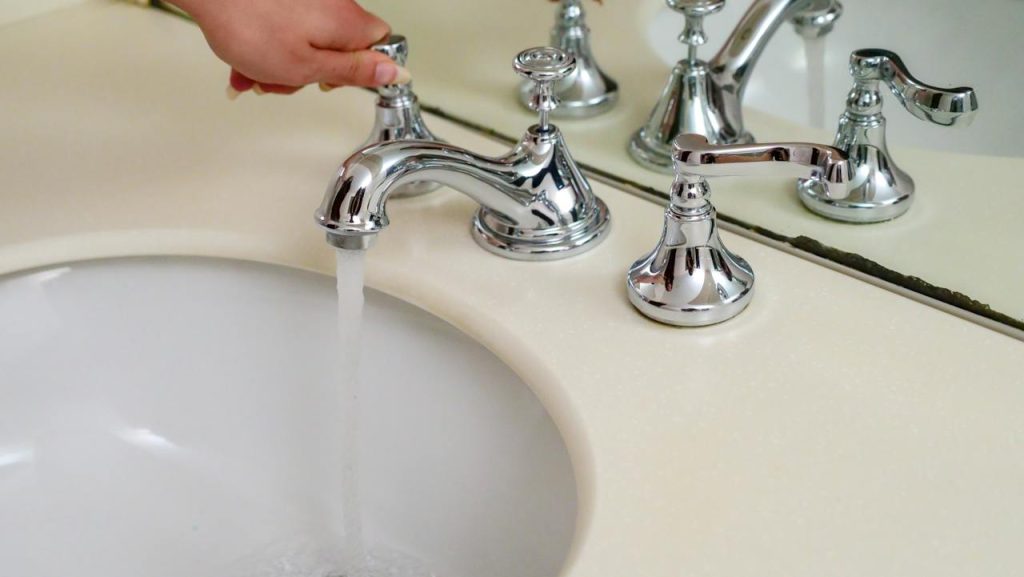When it comes to tackling low water pressure issues, understanding the essential solutions before making a purchase can make all the difference. From simple fixes like faucet aerators to more complex adjustments such as pressure regulators, knowing your options is crucial. By exploring these solutions, you can contrast quick fixes with long-term investments and find what best suits your needs. Stay informed about the factors influencing water pressure, like pipe blockages or municipal supply problems, to make an educated decision. With this guide, you’ll be equipped to address low water pressure effectively and ensure a steady flow throughout your home.
Table of Contents
ToggleRecognizing Low Water Pressure
Checking with Gauge
To accurately check water pressure, utilize a gauge designed for this specific task. Attach the gauge to an exterior faucet.
Always ensure that the water is turned off before connecting the gauge. This step prevents any inaccuracies in the reading.
Identifying Low Pressure
Pressure below 40 psi typically signals low water pressure issues within a home. This level signifies the need for further investigation.
Low home water pressure can lead to various inconveniences, such as slow-filling bathtubs or inefficiently running appliances.
Testing Faucet Consistency
Verify water pressure consistency by testing various faucets throughout your home. Inconsistencies may point towards localized issues.
A full water pressure check involves examining both hot and cold water sources separately. This process ensures a comprehensive evaluation.
Understanding Causes of Poor Flow
Scale Buildup
Inspect pipes for scale buildup, a common culprit behind low water flow. Over time, mineral deposits accumulate inside pipes, restricting the flow.
Scale buildup occurs due to hard water, containing high levels of minerals like calcium and magnesium. These minerals gradually form deposits on the inner surfaces of pipes, reducing the diameter through which water can pass. This leads to decreased water pressure in faucets and showerheads.
Main Water Shut Off Valve
Ensure the main water shut off valve is fully open to prevent flow restrictions. Sometimes, this valve may not be completely turned on, causing reduced water pressure throughout the house.
Checking the main water shut off valve is crucial as even a slightly closed valve can significantly impact water flow. By ensuring it is fully open, you can eliminate one potential cause of low water pressure.
Municipal Water Supply
Contact the municipal water supply if you suspect external factors affecting your water flow. Issues such as maintenance work or pipe damages in the city’s water system can lead to reduced water pressure.
Municipalities are responsible for maintaining a consistent and adequate water flow to residents. If you notice sudden drops in water pressure without any apparent internal issues, reaching out to the local authorities can help identify and resolve broader causes impacting your home’s water flow.
Examining Solutions for Better Pressure
Water Booster Pump
Consider installing a water booster pump to address low water pressure issues effectively. These pumps work by increasing the force of water flow, providing a significant boost in pressure. By enhancing the water pressure, you can enjoy improved performance from your faucets, showers, and appliances.
Adjusting Pressure Regulator
Adjust the pressure regulator setting to optimize your water pressure levels. The pressure regulator controls the flow of water into your home, ensuring a consistent and adequate supply. By fine-tuning this device, you can tailor the pressure to meet your specific needs, resolving any inconsistencies in water flow.
Professional Leak Repair
If you are experiencing persistent low water pressure despite other efforts, it may be time to seek professional help to fix leaks. Leaks in your plumbing system can significantly impact water pressure by causing a decrease in flow. A professional plumber can identify and repair these leaks efficiently, restoring your water pressure to optimal levels.
Addressing Hard Water Issues
Replace Pipes
When dealing with hard water issues, consider replacing pipes affected by severe scale buildup. This buildup can restrict water flow and lead to low pressure.
Install Water Softener
To prevent hard water problems, installing a water softener is crucial. This device helps reduce mineral content in the water, improving flow and water demand.
Clean Faucet Aerators
Another effective solution for combating hard water issues is cleaning faucet aerators regularly. This simple task can significantly improve water pressure in your home.
Dealing with Pipe Leaks
Detecting Leaks
To identify pipe leaks, inspect areas with water stains or mold growth, indicating hidden water damage. Look for damp spots near plumbing fixtures.
Leaking pipes can lead to extensive corrosion and damage if left unchecked. Addressing leaks promptly is crucial to prevent further issues.
Repairing Leaks
When it comes to fixing pipe leaks, it’s essential to engage a licensed plumber for accurate detection and efficient repair services. Timely repairs can save you from costly damages.
Repairing leaks involves assessing the extent of damage, determining the cause, and implementing appropriate solutions. A skilled plumber can provide expert guidance in this process.
Professional Assistance
Consulting a plumber for leak detection and repair ensures that the issue is effectively resolved. Plumbers have the expertise and tools to locate hidden leaks accurately.
Licensed plumbers use advanced techniques like pressure testing and infrared technology to pinpoint leaks without causing unnecessary damage to your property.
Benefits of Prompt Action:
- Early leak detection prevents extensive water damage.
- Timely repairs save money on potential future damages.
- Consulting a licensed plumber ensures accurate diagnosis and effective solutions.

Adjusting Water Valves
Finding the Valve
Locating the main water shut off valve is crucial for adjusting water pressure in your home. Typically, this valve is found where the main water line enters your house.
Opening the Valve
To increase water pressure, turn the main water shut off valve counterclockwise until it’s fully open. This action allows maximum water flow into your home’s plumbing system.
Checking Other Valves
Ensure all other water valves in your house are fully open as well. This step guarantees that there are no restrictions in the water supply, maintaining optimal water pressure throughout your home.
Upgrading Systems and Pipes
Corrosion-Resistant Pipes
Upgrade plumbing systems with corrosion-resistant pipes to enhance water flow efficiency. These pipes prevent rust accumulation, ensuring a steady water pressure throughout the house. Consider this upgrade to address low water pressure issues effectively.
Replace Old Pipes
Replacing old plumbing pipes can significantly improve water pressure in your home. Over time, pipes may develop buildup that restricts water flow, leading to reduced pressure at fixtures. By upgrading to newer pipes, you can eliminate these obstructions and enjoy better water pressure.
Whole-House Filtration System
Installing a whole-house filtration system is essential for maintaining optimal water pressure. This system helps remove impurities from the water treatment system, preventing clogs in pipes and fixtures. By ensuring clean water flows freely through the plumbing system, you can avoid issues that cause low water pressure.
Incorporating these solutions into your equipment can make a noticeable difference in your daily water usage experience. By addressing underlying problems within the plumbing system, you can enjoy consistent water pressure at every faucet and appliance in your home.
Consider the following benefits of implementing these upgrades:
- Improved overall water quality
- Reduced risk of leaks and pipe damage due to buildup
- Extended lifespan of appliances and fixtures due to consistent water pressure
Remember to consult with a professional plumber before making significant changes to your plumbing system. They can provide expert advice on the best solutions for your specific setup and ensure proper installation of new equipment.
Boosting Well Water Pressure
Installing Tank
Installing a water pressure booster system can significantly enhance the water pressure in your well. This system consists of a pressure tank that helps maintain consistent water pressure throughout your home. By regulating the flow of water, it ensures a steady and optimal home water pressure.
A water pressure booster pump is another essential component that works in conjunction with the pressure tank to boost water pressure. It increases the force of water flowing through your pipes, ensuring that every faucet and shower in your home receives adequate water pressure.
Checking Pump
Regularly checking your well pump is crucial to prevent any potential issues that may lead to low water pressure. Ensure that the pump is functioning correctly and efficiently to maintain optimal water pressure levels in your well system. A malfunctioning pump can result in inadequate water pressure throughout your home.
When experiencing low water pressure, it’s important to inspect the pressurized water system and identify any possible leaks or blockages that could be affecting the overall performance. Addressing these issues promptly can help restore optimal water pressure in your well system.
Consulting Expert
Consulting a well water expert is advisable when dealing with persistent low water pressure issues. These professionals can provide tailored solutions based on the specific characteristics of your well system and address any underlying problems affecting the water pressure. By seeking expert advice, you can implement effective strategies to boost the overall performance of your well system.
Pros of Installing Tank:
- Ensures consistent water pressure.
- Regulates flow for optimal home water pressure.
Cons of Checking Pump:
- Requires regular maintenance.
- Malfunctioning pumps can lead to low water pressure.
Before Buying: Key Considerations
Research Requirements
When considering solutions for low water pressure, it is crucial to first research the specific water pressure requirements of your household. Different systems have varying capabilities, so understanding your needs is essential. Look into the flow rate needed for your appliances and fixtures to ensure compatibility.
Compatibility Check
Before making a purchase, it’s important to assess the compatibility of any new system with your existing setup. Ensure that the system you choose aligns with your current plumbing configuration and won’t cause any issues. Checking compatibility can prevent costly installation problems down the line.
Warranty and Maintenance
Warranty and maintenance are key factors to consider when looking at potential purchases to improve water pressure. Verify the warranty details offered by manufacturers as this can safeguard your investment. Understand the maintenance requirements of each system to ensure long-term efficiency.
Conclusion
Recognizing the signs of low water pressure, understanding its causes, and exploring effective solutions are crucial steps to ensure a steady and satisfying water flow in your home. By addressing hard water issues, dealing with pipe leaks, adjusting water valves, upgrading systems and pipes, and boosting well water pressure, you can significantly improve your water pressure situation. Before making any purchases or decisions, remember to consider key factors such as your specific needs and budget constraints.
Now armed with a deeper understanding of low water pressure issues and their remedies, you can take proactive steps to enhance your water system’s performance. Don’t hesitate to implement the solutions discussed here to enjoy a more efficient and reliable water supply in your household.
Experience Excellence in Low Water Pressure Solutions with Garcia Home Restoration!
We recognize the frustrations homeowners face when grappling with low water pressure in their plumbing systems. At Garcia Home Restoration, our proactive team of licensed experts leads the way in delivering exceptional low water pressure solutions that guarantee reliability and efficiency.
We don’t just react to plumbing issues; we prevent them. Garcia Home Restoration offers comprehensive home maintenance solutions to keep your systems running smoothly. Our reputation in Contra Costa County is built on unwavering quality, unmatched expertise, and the trust of numerous satisfied clients. Don’t settle for less when it comes to your home’s functionality and cleanliness. Contact us today for proactive low water pressure services and enjoy a worry-free plumbing future!




